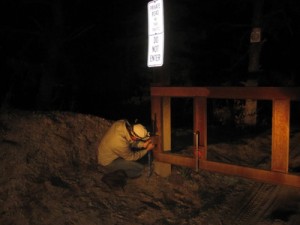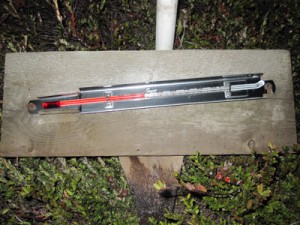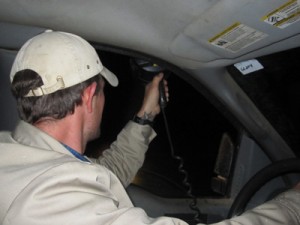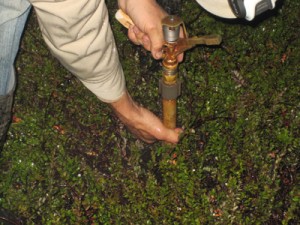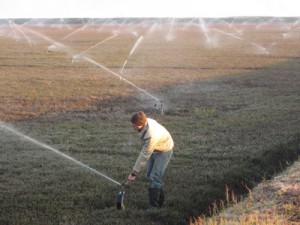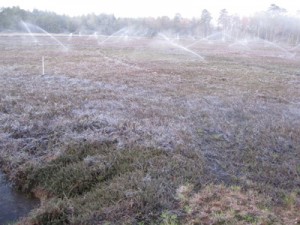One of the toughest things cranberry growers do is managing springtime frost conditions. In the spring, there is a danger to the crop when the temperature drops. 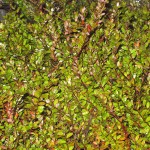 Typically, a cranberry bog is built at a lower level than the land immediately surrounding it and the bog temperature can drop ten to fifteen degrees lower than the uplands. These conditions make monitoring bog temperature a top priority once the winter water comes off. It’s no exaggeration to say there would be no crop if we didn’t watch for frost on the bogs. A night riding along with Jeremy Fenstermaker is an exercise in watching the weather, the water . . . and managing sleep patterns.
Typically, a cranberry bog is built at a lower level than the land immediately surrounding it and the bog temperature can drop ten to fifteen degrees lower than the uplands. These conditions make monitoring bog temperature a top priority once the winter water comes off. It’s no exaggeration to say there would be no crop if we didn’t watch for frost on the bogs. A night riding along with Jeremy Fenstermaker is an exercise in watching the weather, the water . . . and managing sleep patterns.
The call by our general manager usually goes out in the early evening; depending on the forecast, the frost team can go out anywhere from 9 P.M. to 1 A.M. This particular evening, we started at 9. The guys each have their own section to run: Jeremy’s is located on Sim Place. The night begins with making sure we have everything we need: boots, warm clothing, head lamps, and coffee (especially coffee!). And then we’re off for a long night in the middle of the bogs.
The first step is monitoring the temperature. Each bog has a thermometer (usually located in the coldest section) that requires frequent checking throughout the first part of the night.
Once the temperature drops to between 33 and 35 degrees Fahrenheit (depending on the stage of growth), it’s time to turn on the pumps. On these particular systems, the pumps need to be running at about 45 psi. More than forty years ago we used to flood the bogs to prevent frost damage; we now use sprinklers instead. When the water from the sprinklers freezes on the vines, it controls the temperature well enough to keep them from harm.
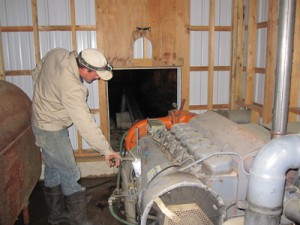
It’s also necessary to check the surrounding reservoirs and canals to make sure that the water supply is sufficient to supply the pumps.
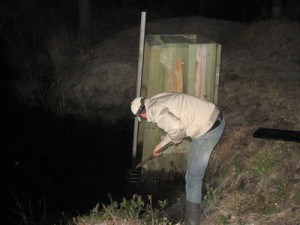
That can take some time, and doesn’t always need to be done all at once. Depending on location and conditions–is the bog surrounded by woods? Where is the wind coming from? Is the sky clear or overcast?–some will be started earlier than others. Once they’re all started, though, the work isn’t over. The next thing is making sure all the sprinklers are working correctly. This means driving around with a spotlight and checking to make sure they’re running at full capacity.
It may sometimes be necessary to repair the sprinklers, as they won’t run at full capacity if something is blocking the line. This happens more frequently when the systems first start running, and becomes less of an issue after a few cold nights.
This goes on for the rest of the night. It does get a little easier when the sun comes up, simply because the light is better.
Once the sun comes up and we’re done the repairs, it’s time to start checking the temperature to see if it’s safe to turn off the pumps. Once the thermometer reads around 35 degrees or so and the ice is breaking up, we’re okay to shut down.
After the pumps are shut down and the paperwork is turned in, it’s off to get some sleep!

